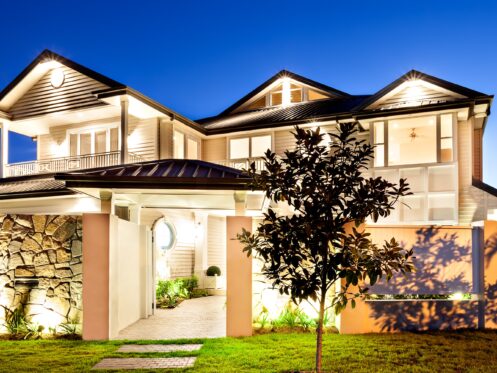Upgrading the lighting on the exterior of your home can make your property safer. This improvement can also boost curb appeal and increase the value of your home. There are different types of outdoor lighting, different bulb options and various other factors to consider when planning an upgrade.
Benefits of Upgrading Your Outdoor Lighting
By ensuring the exterior of your home is well illuminated, you can deter intruders and criminals. Making sure your property has optimal visibility can also prevent accidents from occurring, like tripping over debris in the yard or on a pathway.
A home that has ample lighting can look more attractive than a residence that is hidden in darkness. Lighting can highlight different architectural features, landscaping and much more. Your home will appear more inviting when you upgrade your home’s lighting with outdoor fixtures.
Considering Your Lighting Needs
The first place to start is thinking about what areas of your home or property could benefit from new lighting. The most obvious choices are your entry points, like your front door, back door, garage area and any side doors. You also want to adequately light any walkways that someone may use once the sun goes down. This makes it easy for people to move around your property.
Many homeowners choose to add lighting around gardens, trees, water features or other distinctive landscaping elements. While this doesn’t necessarily add to the safety or function of your property, it can create a really nice atmosphere.
Lastly, there may be areas on your property that you will use in the evenings that require lighting. A hot tub, pool, deck, porch or patio can all be difficult to navigate when lighting is insufficient.
What Are the Different Types of Outdoor Lighting?
There are several types of outdoor lighting available. What you choose may be determined by your budget, style preferences or electrical setup. Motion-activated lights are very popular on the exterior of homes. They will only turn on when motion is detected. This eliminates the need to pay to keep the lights always on. A bright light turning on quickly can also deter criminal activity, making someone think that you turned the light on yourself because you saw them. Motion-activated lights are ideal for areas like your porch, driveway and backyard.
Floodlights cover a large space at one time, helping to address all the different dark corners of your property. These lights are ideal for backyards, large driveways and side yards where you don’t have a lot of windows or doors to help you stay aware of what’s going on outside. You can choose how bright you want your floodlights to be. The higher the wattage, the more illumination you’ll achieve.
There are many types of ground lights that you can add near pathways or driveways. They insert into the ground, and you can remove them when snow starts to accumulate. These lights usually have low wattage but do a great job of illuminating a small area and adding ambiance.
You can incorporate spotlights into your landscaping, highlighting beautiful trees or plants. Spotlights usually provide a very direct stream of bright light, allowing you to customize your outdoor lighting setup.
You can install mounted fixtures in the ceiling of your covered porch or on your siding. These are functional fixtures that come in many different designs. You can match your mounted fixtures to the rest of your home’s knobs and details.
If you aren’t interested in adding a large volume of light but would like to add ambiance, you can hang string lights around trees, patios or pergolas. This is a great way to create a cozy atmosphere if you enjoy hosting a party during the evening.
An eco-friendly way of adding lighting to your property is to install solar lights. Using power from the sun, solar lights can illuminate walkways, gardens and landscaping.
New Lighting Technology
Outdoor lighting often features smart technology, which allows you to control your lights using your smart device. You can use apps to set a schedule for turning your outdoor lights on and off and make manual adjustments remotely as well. Some smart lights allow you to adjust the color or brightness of your lights.
What to Consider When Choosing Lights
There are several things to consider when choosing your outdoor fixtures. It’s important to match your lighting to the style of your home, whether it’s farmhouse, rustic, traditional or modern. There are also different weather-resistant materials available, including steel, aluminum, plastic and brass. Make sure the material you choose will match the rest of your home and hold up well when exposed to the elements.
Determining Light Brightness and Temperature
Light bulbs are rated using lumens, or the amount of light that a bulb gives off. If you’re looking for optimal brightness for things like spotlights, you’ll want to choose bulbs with a lumens rating of approximately 1200 to 2400 lumens. Accent lighting is usually between 200 and 400 lumens, while pathways and walkways benefit from a minimum of 100 to 200 lumens. Decorative lighting like string lights can be as low as 50 lumens.
LED bulbs are very popular, providing you with adequate lighting while keeping costs low. While the initial investment in LED bulbs is usually a bit higher than their incandescent counterparts, you can save up to 90% on energy. If your home spends roughly $200 on lighting per year, you could drop this amount by 20% to 30%.
Color temperature is also something to consider when choosing bulbs for your outdoor fixtures. Inside your home, you may enjoy yellow light since it is very cozy and easy on the eyes. However, achieving optimal brightness outside for security and ambiance can perhaps best be accomplished with white light.
Scheduling Professional Lighting Installation
It’s important that you have a professional electrician install your outdoor lighting. Working with someone who is knowledgeable and experienced will ensure that wiring is placed according to local code, ensuring safety. A professional can also help you determine the best location for your lighting, and they may have access to higher-quality materials than what is available in stores. While it may be tempting to take on this project yourself to save money, there are mistakes you can make that can cause electrical problems that put you at risk of electrocution or a house fire.
You should have your home’s electrical system inspected once per year. This includes the wiring to your fixture, ensuring that connections are secure and wires are undamaged. Make sure that you keep your fixtures clean and replace burnt-out bulbs regularly. Check your lights periodically to make sure they are pointed in the correct direction, especially solar lights, which require direct sunlight to function.
Bryant Heating, Cooling, Plumbing & Electric can help homes in Louisville and surrounding areas with the selection and installation of outdoor lighting. We can also help with other electrical services that may be necessary, such as rewiring, wiring repairs, panel expansions and surge protection.
Contact Bryant Heating, Cooling, Plumbing & Electric today to schedule an appointment in select areas of Kentucky, Indiana and Ohio.



